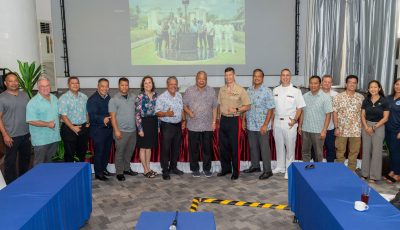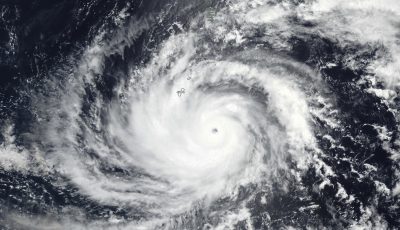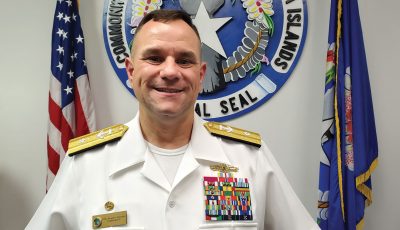Military planes are not so plain
When we talk about military planes, some citizens associate this idea with large heavy bombers flying in and out of Andersen Air Force Base to and from Hawaii, Asia, the continental U.S., Alaska, or elsewhere. Others may think that airplanes used for military missions are the exclusive purview of the Air Force.
Our points of reference with regards to military aircraft may also cause us to think about accidents. It wasn’t too long ago when a B-2 caught fire up in Andersen and was damaged and grounded for months as off-island repair crews arrived and completed their work. Others vividly recall the B-52 crash north of Guam on Liberation Day in 2008, where the entire airplane crew died.
Weapons intended for use in the airspace
Military planes are more widely used by the Pentagon than what the public and the village public may realize.
Military aircraft weapons are not just about large bombers coming in and out of Andersen Air Force Base because military aircraft also include helicopters, unmanned aerial combat systems, intelligence airplanes, and refueling airplanes used by conventional, unconventional, and paramilitary forces. Civilian aircraft are also used in some capacities to assist and carry out military and paramilitary operations.
In Guam, the Air Force helps move cargo, people, and fuel that support activities such as ground combat and ground combat training operations as well as refueling planes of all types.
These kinds of work tasks constitute what the Air Force euphemistically refers to as global power or the ability to project military resources, and the capabilities to destroy targets anywhere on Planet Earth.
What’s the catch?
The catch is that these weapons of war intended for use in the air require tremendous amounts of logistical support, as well as the storage, access, delivery, and consumption of fuel. Military air assets also require being fully connected to low orbit space satellites to be effective and precise, with regards to carrying out a variety of missions.
If the global satellite infrastructure stopped working, it would devastate the ability of the U.S. airpower community to fulfill and carry out a variety of its stated mission sets because aircraft rely on satellites in space to help manage the total airpower environment.
Why we should educate ourselves more on the importance of military airplanes and aircraft
The Navy, as most of us are aware, has aircraft carriers, which are large capital surface ships that embed airplanes for use to win wars. Unlike the Air Force, the Navy carries around its airplanes as aircraft carriers’ transit and sail throughout the Deep Blue Ocean continent, including our region.
Navy airplanes are used for activities that are referred to as tactical offensive operations at sea. The Navy trains its air force to conduct activities that are intended to defend the ships that escort and accompany aircraft carriers, shoot down enemy fighter jets, look for enemy submarines, jam enemy communications links, spy on adversarial communications traffic, and move around naval special operations personnel throughout our Deep Blue continent, including our region.
The Marine Corps similarly derives its institutional purpose in part using what is called tactical fighter aircraft. The difference with the Marines is that this organization relies on the Navy to take it to the fight, and to carry its assortment of airplanes that are used to deliver air support to Marines working near shore, on shore and in inland areas close to shore.
The Marine Corps focus is to integrate real-time airpower in union with Marine Corps forces at sea in ways that are viewed and coined as integrated. The Marines also are able to carry around their airplanes at sea because they have a fleet of small aircraft carrying ships that are called “amphibious” vessels operated by the Navy.
How about the Army?
The Army, like the Marines, has extensive inventories of air vehicles that are also used to provide fire and logistical support to ground combat personnel. Unlike the Navy and Marine Corps though, Army aircraft perform work more heavily focused on the need to move across vast swaths of land anywhere in the globe. To do this, the Army employs a variety of rotary wing aircraft that can move people and resources to the land fight anytime of the day, anywhere on land. The Army’s ability to deliver violence to land-based adversaries via helicopter are quite impressive.
What we should expect to see when it comes to military aircraft and the Marianas Islands
We should expect to see newer versions of aircraft that carry fuel, nuclear weapons, cargo, personnel, ordnance and ammo, missiles, and spy equipment.
We should expect to see the Pentagon continue to spend trillions of dollars over time to develop, test, design, operate, maintain, and construct thousands of additional aircraft to update, replace or reconstitute weapons intended to give America military advantage in the Deep Blue Ocean continent region.
We should expect to see American aircraft assigned to work more closely with key allies in the region, whether it is the Australians, Japanese or Thai armed forces. We should also expect to see key American military operational commanders in charge of aircraft operations to continue to train throughout the region, working with all branches of the U.S. military as well as with allied militaries.
The writer hopes that the Guam congressman will move much quicker to get Guam Air Guard personnel some robust aircraft assets that enable Guard units to expand the composition of their current mission footprint.
Finally, it is hoped that safety and environmental protection considerations remain top priority when it comes to all operations tied to the airspace throughout our Marianas Islands because our environment and our fellow citizens remain the most important assets and resources.



























